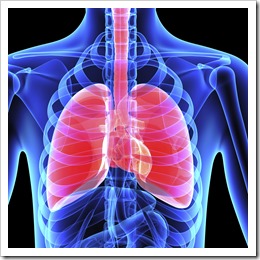In the current study, patients with proven and stable chronic obstructive pulmonary disease (COPD) were randomized to treatment with either N-acetyl cysteine (NAC) 600 mg twice daily or placebo, in addition to the treatments they were already using. Patients had a follow-up every 16 weeks for one year. After enrolling 120 patients with COPD who were at least 4 weeks after their last exacerbation, in the end there were 108 who completed the study with 52 in the NAC group and 56 in the placebo group. In the analysis patients were classified as a high exacerbation risk (a history of two or more exacerbations per year or a lung function forced expiratory volume < 50% or both). Those with a low exacerbation risk had a history of fewer than two exacerbations per year and a forced expiratory volume of 50% or more and no recent hospitalizations related to COPD.
related to COPD.
For high risk patients, this higher dose of NAC at 600 mg twice daily significantly reduced the exacerbation frequency at 8 and 12 months, a prolonged amount of time until the first exacerbation and an increased probability of having no exacerbations at one year, compared to placebo. For low risk patients, this dose of NAC did not have a significant effect.
Commentary: Chronic obstructive lung disease (COPD) includes a group of lung diseases that block airflow in the lungs and make breathing difficult. The two most common causes of COPD are chronic bronchitis and emphysema. In emphysema, the air sacs at the smallest end of the airway passages are destroyed. Chronic bronchitis is a chronic inflammation of the lining of the bronchial tubes. COPD is frequently associated with exacerbations which lead to a deterioration of lung function and quality of life. One of the primary management goals of COPD is to prevent these exacerbations. For those with a high rate of exacerbations, corticosteroid inhalers and phosphodiesterase inhibitors are frequent strategies. However, these regimens may be associated with corticosteroid inhaler induced pneumonias. Mucolytic agents have an important role in the management of COPD exacerbations because increased mucus secretions causes coughing and the mucus plugs can obstruct airways and lead to increased death.
Oral N-acetylcysteine (NAC) is known for its mucolytic effect, but also is a significant antioxidant and anti-inflammatory. NAC is also a free radical scavenger and a precursor of reduced glutathione which contributes to the inflammatory modulatory effect. This potent antioxidant and anti-inflammatory effect is best achieved with 100 mg per day or more. In one previous study, 1,200 mg/day was shown to improve exercise endurance in patients with emphysema related COPD. In another (the HIACE study), 600 mg twice daily reduced COPD exacerbations and improved small airway function. In a large 3 year trial, (the BRONCHUS study) NAC did not improve lung function or result in a decline in the frequency of COPD exacerbations, however it is suggested that this was due to a dose of only 600 mg/day.
COPD exacerbations are multifactorial (mucus hypersecretions, inflamed ciliated epithelial cells in the airway, excessive migration of neutrophils, a high amount of oxidative stress and lowered vital lung capacity.) I think this leans towards a good understanding of why NAC is the perfect supplement to reduce the frequency of exacerbations and perhaps severity, due to its antioxidant and anti-inflammatory effects, its mucolytic effects and its ability to inhibit the attachment of bacteria to the lung epithelium. It appears as though the effect is most significant in higher risk COPD patients.
Reference
Tse HN, Raiteri L, Wong KY, et al. Benefits of high dose N-acetylcysteine to exacerbation-prone patients with COPD. CHESE 2014;146(3):611-623.

